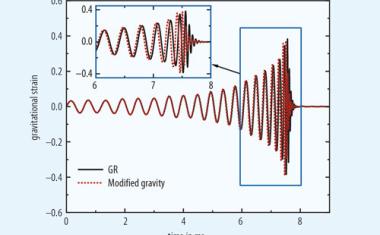 Martin R. Zirnbauer • 9/2012 • Seite 41
Martin R. Zirnbauer • 9/2012 • Seite 41Of symmetries, symmetry classes, and symmetric spaces
From disorder and quantum chaos to topological insulators
Quantum mechanical systems with some degree of complexity due to multiple scattering behave as if their Hamiltonians were random matrices. Such behavior, while originally surmised for the interacting many-body system of highly excited atomic nuclei, was later discovered in a variety of situations including single-particle systems with disorder or chaos. A fascinating theme in this context is the emergence of universal laws for the fluctuations of energy spectra and transport observables. After an introduction to the basic phenomenology, the talk highlights the role of symmetries for universality, in particular the correspondence between symmetry classes and symmetric spaces that led to a classification scheme dubbed the “Tenfold Way”. Perhaps surprisingly, the same scheme has turned out to organize also the world of topological insulators.
Let me begin by expressing that I feel greatly honored to be this year’s recipient of the Max-Planck medal, and I appreciate the opportunity to give a talk on some of the work that may have earned me this distinction. To set the stage and give you a flavor of what is to come, let me remind you of the old but still fascinating story of universal conductance fluctuations (UCF). Predicted theoretically in the middle of the 1980s by Altshuler [1] and by Lee and Stone [2], UCF was investigated in a large number of experiments. It was found that in a great variety of different mesoscopic systems − such as a small gold ring for example, or an even smaller silicon MOSFET − the electrical conductance displays characteristic fluctuations of the order of one when expressed in units of the conductance quantum e2/h (Fig. 1). What is most remarkable is that the size of the fluctuations in a broad range of parameters does not depend on the system dimension, the disorder strength, etc., but only on a few fundamental symmetries.
It was realized early on that there exists a close connection with the fluctuations that had been observed decades earlier in the scattering cross section of slow neutrons on atomic nuclei. This far reaching connection is at the very root of what I have to say. It led, among other things, to the development of a broad framework in which to model and calculate mesoscopic effects such as UCF. ...
 Daniela Doneva • 9/2024 • Seite 76 • DPG-Mitglieder
Daniela Doneva • 9/2024 • Seite 76 • DPG-MitgliederEnlightening the dark universe
Gravitational waves promise to shed light on fundamental physics through observations of dark compact objects.
Gravitational waves provide a unique window into the most cataclysmic events in the universe, from the Big Bang to black hole mergers. They complement traditional electromagnetic astronomy and, in addition, reveal phenomena that were previously hidden from our view.
The direct detection of gravitational waves in 2015 [1] was among the most important discoveries in fundamental physics in recent decades and a proof of one of the fundamental predictions of General Relativity (GR). The signal was observed by the two underground LIGO detectors in Hanford and in Livingston (Fig. 1); the comparison of the data in the bottom plot demonstrates that both detectors witnessed the same event. At least two detectors operating simultaneously are needed to confirm the detection because these instruments are so sensitive that various noises might contaminate the signal, such as seismic activities or even animals walking on the ground above the detector. In addition, it is very important that the observed signal matches the theoretical prediction very well. This is a confirmation that the observed gravitational wave event is a merger of two compact objects with spacetime curvature in their vicinity reaching extreme values. Even though a number of exotic scenarios cannot be excluded, the most probable one is that these were two colliding black holes. (...)
 Giorgio Parisi • 9/2011 • Seite 29
Giorgio Parisi • 9/2011 • Seite 29The discoveries of slowness
Theoretical progresses in off-equilibrium behavior of glassy systems
Many systems approach equilibrium very slowly. Their equilibration time becomes macroscopic and is sometimes so large that it cannot be measured. Significant progress have recently been made in understanding the collective phenomena that are at the basis of this behavior, especially in structural glasses and spin glasses.
The typical microscopic time scale in condensed matter physics is the picosecond. However sometimes the time to approach equilibrium is much larger (e. g. seconds, years ....). When the gap between the microscopic and the macroscopic time becomes very large, the most common scenarios are the following:
- There is a localized microscopic process with large activation energy that is responsible for the very large equilibration time.
- All the localized microscopic processes are fast: there is no single very large energy barrier and the very slow behavior is a collective effect.
The most well understood collective effects happen at a second order phase transition point where there are large-scale excitations that involve a large number of atoms. At the phase transition point the spatial correlation length diverges and at the same time scale becomes very large (critical slowing down): in this situation the characteristic times are much larger than the microscopic time, but usually they still remain microscopic (e. g. they diverge at the critical temperature Tc as |T–Tc|–1.4 with a prefactor that is of order of the microscopic time scale). ...
 • 9/2012 • Seite 41
• 9/2012 • Seite 41


